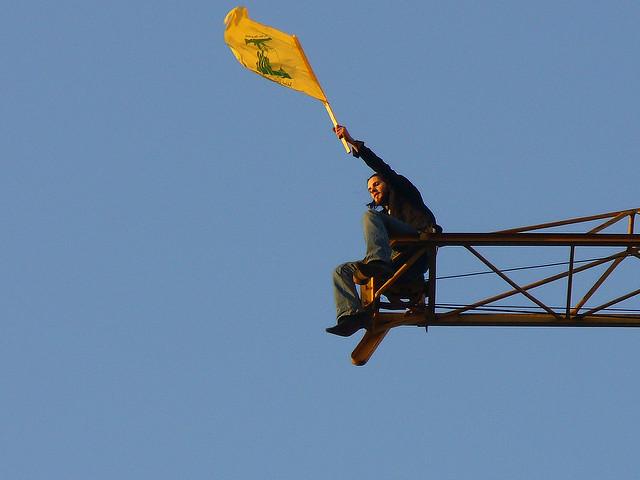The rise and rise of Hezbollah
Posted By Mohammed Ayoob on February 6, 2019 @ 13:12

After nine months of squabbling, Lebanon finally got a new unity government on 31 January with the reappointment of Sunni politician Saad Hariri as prime minister. It’s clear that the balance of power in the new cabinet has shifted further in favour of Shia Hezbollah, which with its Christian and Sunni allies has more seats in the cabinet than Hariri and his allies do.
Washington has been visibly upset about Hezbollah’s accretion of power. The US has listed Hezbollah as a terrorist organisation since 1995 and recently strengthened sanctions [1] against the group. Saudi Arabia, which sees Hezbollah as a front organisation for Iran, has also warned that an increase in Hezbollah’s power would lead it to curtail its financial aid to Lebanon.
The Saudi regime is particularly dismayed at Hezbollah’s having been given charge of the health ministry, which has a large budget and a countrywide network. Iran on the one hand, and Saudi Arabia and Israel on the other, are engaged in a proxy war in Lebanon. Hezbollah’s expanding role in the government can be seen as a major gain for Iran.
External powers have traditionally used Lebanon as a battleground for proxy wars. This has been facilitated by the deep-seated internal fissures that are the product of France’s policy of patching together a multi-confessional and multi-ethnic state ripped out of the League of Nations mandate of Syria at the end of World War I. The French doctored the 1932 census to show an artificial Christian majority upon which the confessional balance of five Christians to four Muslims in the Lebanese parliament was based until the 1989 Taif agreement. However, the Maronite elite and their French patrons didn’t anticipate the rapidity of demographic change that quickly led to a clear Muslim majority soon after Lebanon’s independence in 1943.
The refusal of the Maronite leadership to adjust to the new demographic reality and their dependence on external allies, principally the US and Israel, to preserve their privileged position led first to an indecisive civil conflict in 1958 and then to the devastating civil war that lasted from 1975 to 1990. It ended with all parties accepting the principle of parity between Christian and Muslim representation in parliament as formalised in the Taif agreement [2].
However, the Lebanese political scene had changed dramatically during the civil war. The Shia, the traditionally downtrodden segment of the population, who now form a plurality of over 40% in Lebanon’s population, had become politically and militarily active and demanded their share in the Lebanese political structure. The Shia assertion was in part the result of the Iranian revolution that galvanized the Shia around the world. It was also in part the consequence of Israel’s 18-year-long occupation of southern Lebanon from 1982 to 2000 populated mostly by the Shia which radicalised the population.
Hezbollah emerged as a result of the confluence of these two factors. Its reputation soared among both the Shia and non-Shia populations of the country because of its successful resistance to Israeli occupation that forced Israel to withdraw from Lebanon in 2000. By clever manoeuvring and considerable political sagacity, Hezbollah was also able to acquire Christian allies, including Michel Aoun, who is currently the president of Lebanon, thus consolidating its position in the Lebanese polity.
At the same time, its ideological affinity with the Iranian regime and Tehran’s hostility towards Israel made Hezbollah Iran’s most reliable ally in the Middle East. This brought it much-needed Iranian financial support as well as Iranian arms.
The former helped it provide essential social services to its constituency in southern Lebanon, the Bekaa Valley and southern Beirut. The latter assisted it in becoming the most effective military force in the country, far surpassing the Lebanese army and even capable of giving Israel a bloody nose in 2006.
In return, Hezbollah acted as Iran’s proxy force, particularly in Syria, where it played a crucial role in saving the Assad regime. It is also Tehran’s force in reserve in case of an Israeli attack on Iran using the latter’s nuclear program as an excuse. In that case, Hezbollah can be expected to open a second front against Israel in order to divert the latter’s military attention and create mayhem in northern Israel.
Saudi Arabia’s and Israel’s allies in Lebanon—Hariri’s Sunni faction and the Maronites, respectively—are clearly losing ground. The Hariri faction has been discredited by, among other things, Saudi Crown Prince Mohammed bin Salman’s shabby treatment of the Lebanese prime minister, who last year was kept in detention in Riyadh for several weeks. The Maronites have lost their political heft because of the changing demographics in Lebanon and are also divided between pro- and anti-Hezbollah factions.
Hezbollah’s gradual but visible ascent is a function of both demographics and the political acumen of its leadership that has been able to build alliances across confessional lines, especially with a substantial segment of the Christian leadership, giving them non-reciprocal benefits in terms of cabinet positions and other avenues of access to power.
Article printed from The Strategist: https://aspistrategist.ru
URL to article: /the-rise-and-rise-of-hezbollah/
URLs in this post:
[1] strengthened sanctions: https://www.wsj.com/articles/u-s-sanctions-four-men-it-alleges-run-hezbollahs-iraq-operations-1542125622
[2] Taif agreement: https://www.un.int/lebanon/sites/www.un.int/files/Lebanon/the_taif_agreement_english_version_.pdf
Click here to print.